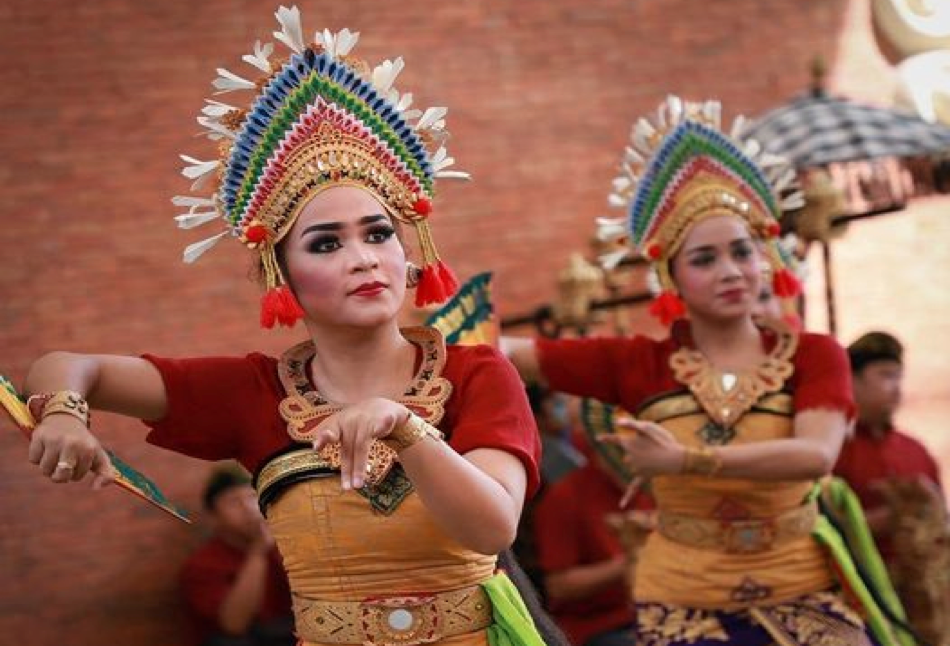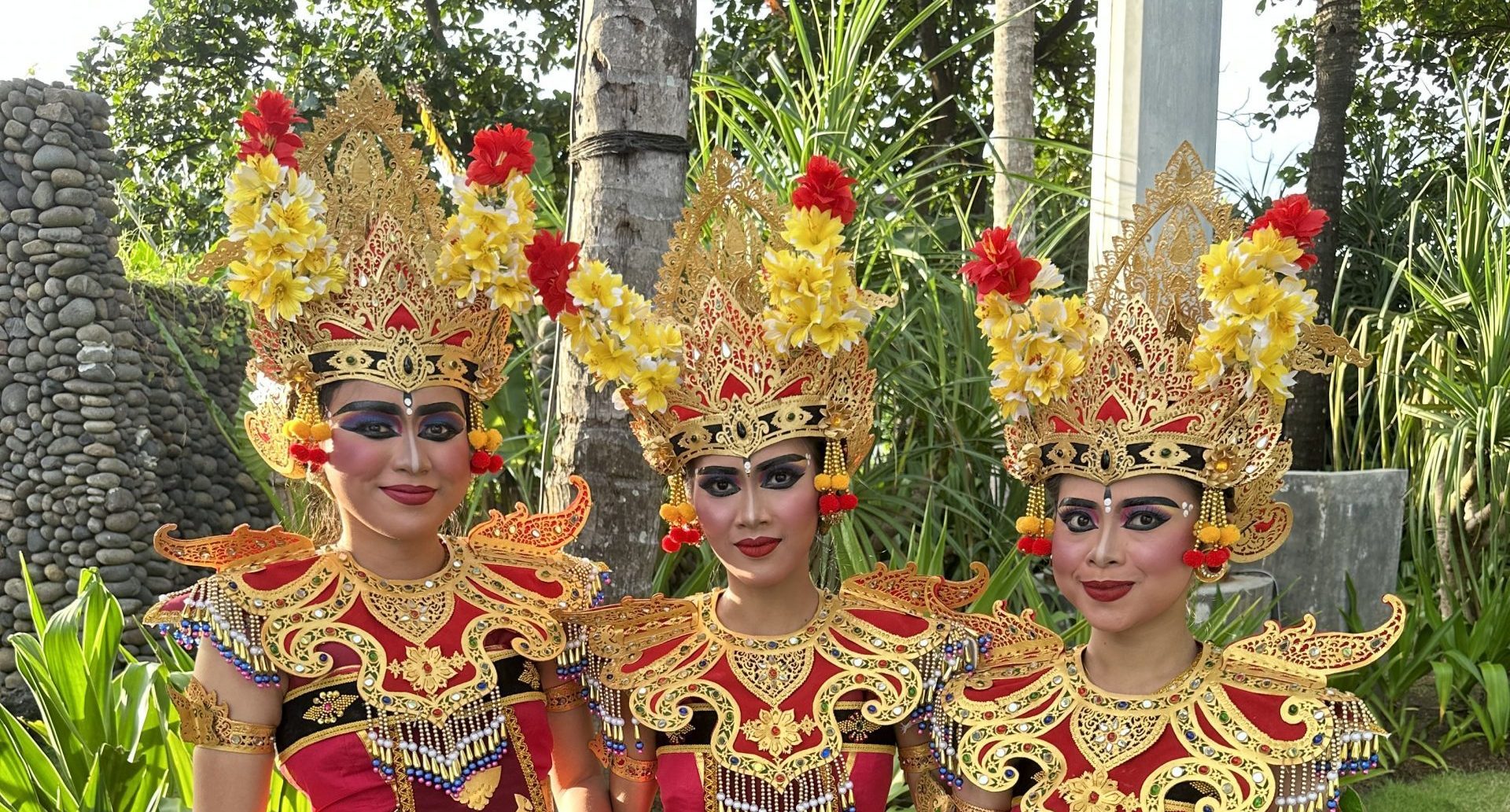
BALINESE DANCE PERFORMANCES
- A captivating traditional Balinese dance performance is the perfect addition for your special event or group activity.
- Whether you’re planning a wedding, celebrating a milestone anniversary or birthday, or planning a corporate or group event, we will tailor and customise a dance performance to suit the theme and mood of your event or activity.
Pendet Dance
- Pendet is a traditional Balinese dance that is typically performed as a welcome dance or offering.
- The dance is characterized by the use of hand gestures and the offering of flowers. The dancers hold a tray of flowers and other offerings and make gestures of welcome and gratitude towards the audience.
- The dance is accompanied by gamelan music, which is a type of traditional Balinese music that uses a variety of instruments such as gongs, metallophones, and drums.
- The dance is usually performed at temple ceremonies, and at cultural events.
- It is one of the most popular dances in Bali and it represents the island’s culture and tradition.
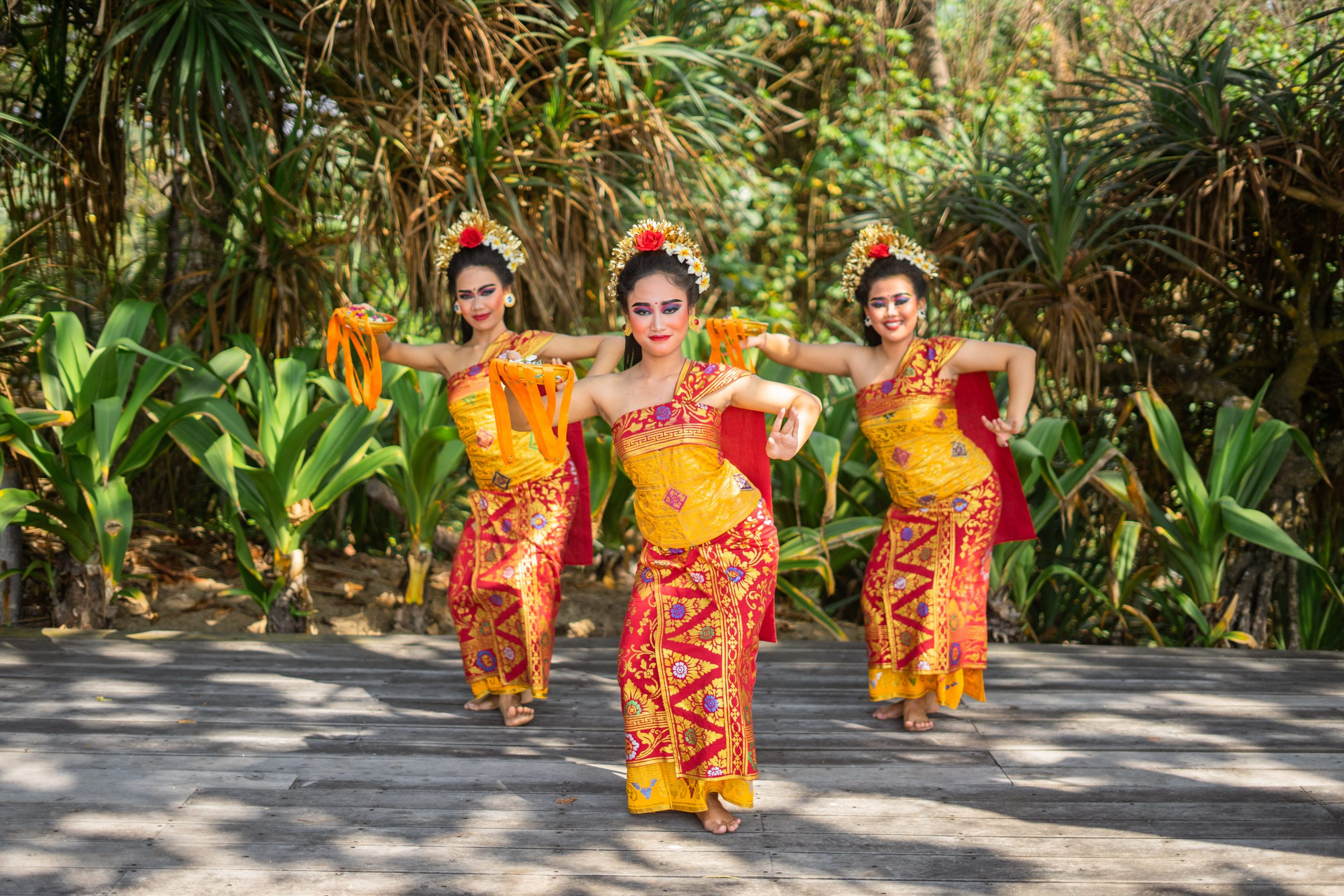
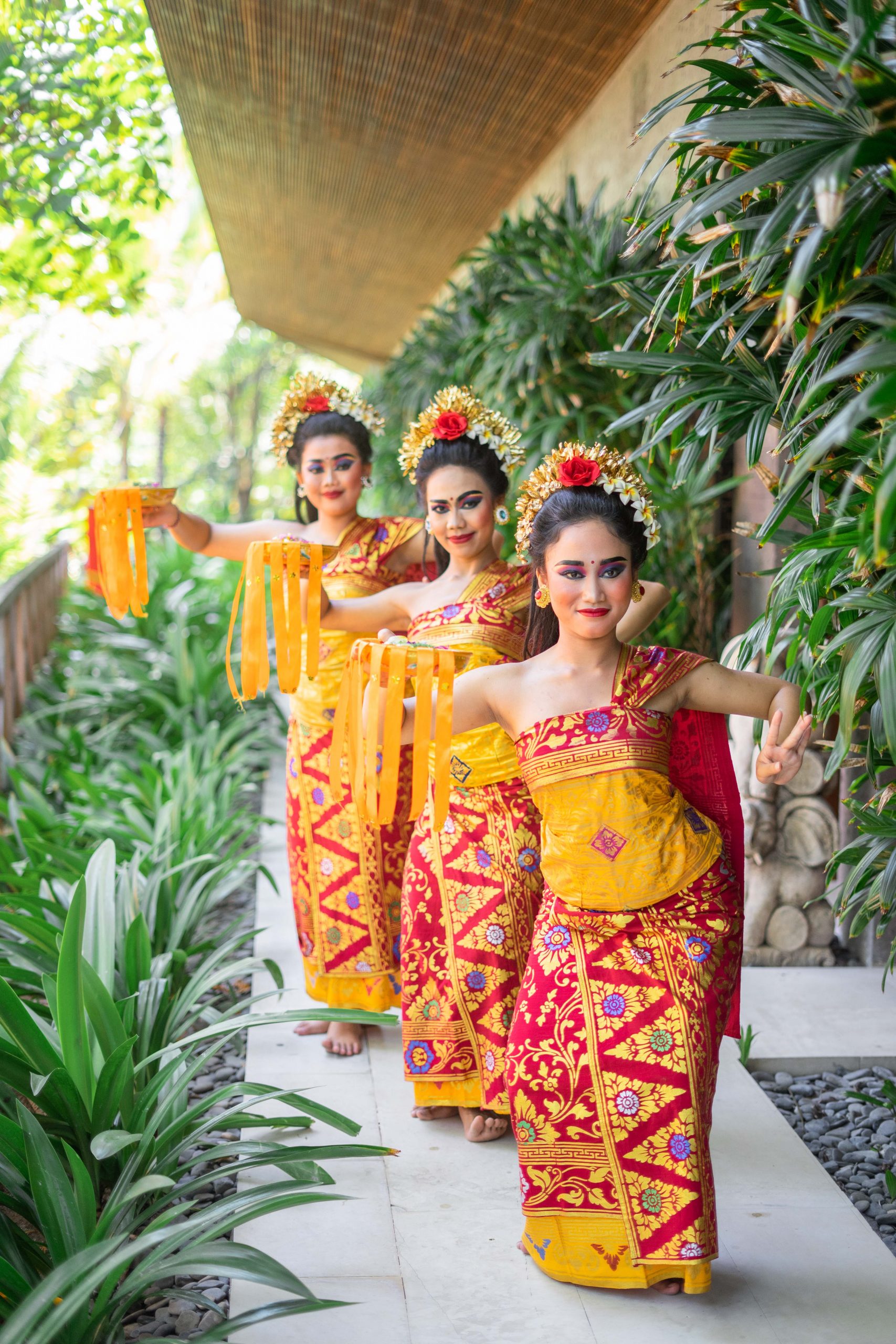
Legong Dance
- Legong Kreasi Mahawidya Dance is a modern interpretation and is a fusion of two dances, where the grace and fluidity of Tari Legong is combined with the spiritual and contemplative elements of Tari Mahawidya.
- The dance tells the story of a woman’s journey to find her true self and attain spiritual enlightenment, and it is often performed in temples, cultural events, and wedding ceremony.
- The term “Kreasi” in the name means “creation” or “innovation,” indicating that this version of the dance is a new and modern interpretation of the traditional forms.
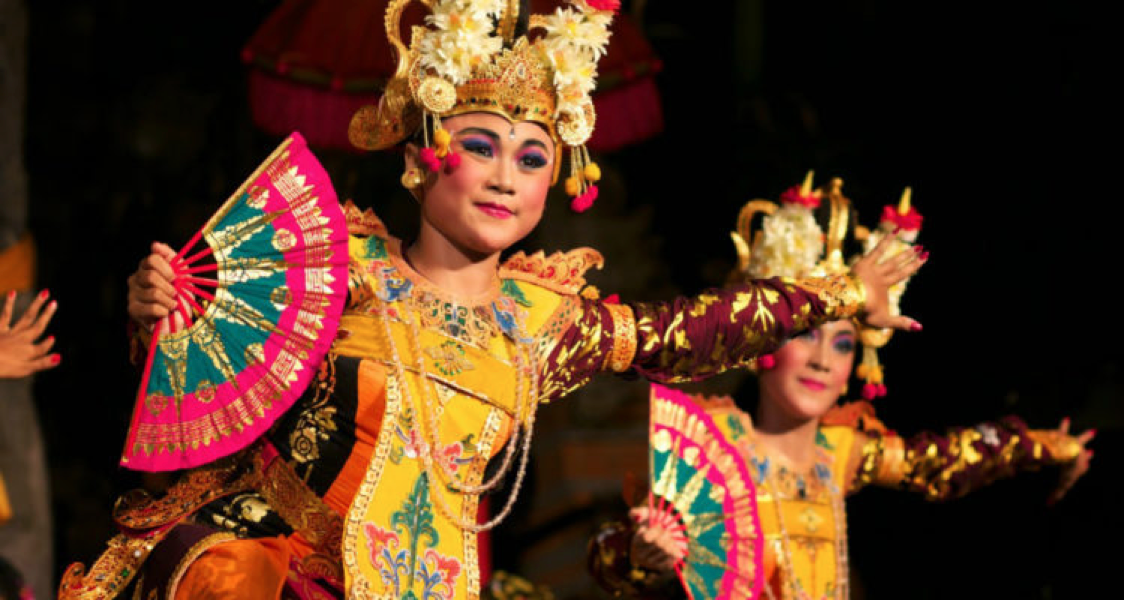
Kecak Fire & Ramayana Dance
- The Balinese Kecak dance, also known as the ‘Ramayana Monkey Chant’, is a traditional dance and drama musical performance that combines movement, vocal chanting, and storytelling.
- It is based on the Hindu epic, the Ramayana, which tells the story of Prince Rama’s quest to rescue his wife Sita from the demon king Ravana.
- The dance is performed by a group of men who sit in a concentric circle, swaying and chanting ‘cak’ repeatedly. The performers are dressed in traditional checkered cloth around their waist, representing monkeys. The lead characters, such as Rama, Sita, Hanuman (the monkey god), and Ravana, are portrayed by dancers who move in and out of the circle.
- The chanting of ‘cak’ by the performers forms the primary musical accompaniment for the dance, replacing traditional gamelan music. The rhythm and intensity of the chanting often correspond to the movements and actions of the characters. The performers use their bodies, hand gestures, and facial expressions to depict various scenes from the Ramayana, creating a vibrant and dynamic visual spectacle.

Kembang Girang Dance
- Kembang Girang Dance is a traditional Balinese dance that is typically an energetic dance that tells the story about very lively Balinese girls.
- Dancers will carry a fan and also a sash on the left side and play it like wings.
- In Bali, flowers are normally used as a symbol of beauty and joy.
- Kembang Girang also means “Joyful Flowers”, and the costume also represents the cheerful life.
